We are sitting on a treasure here
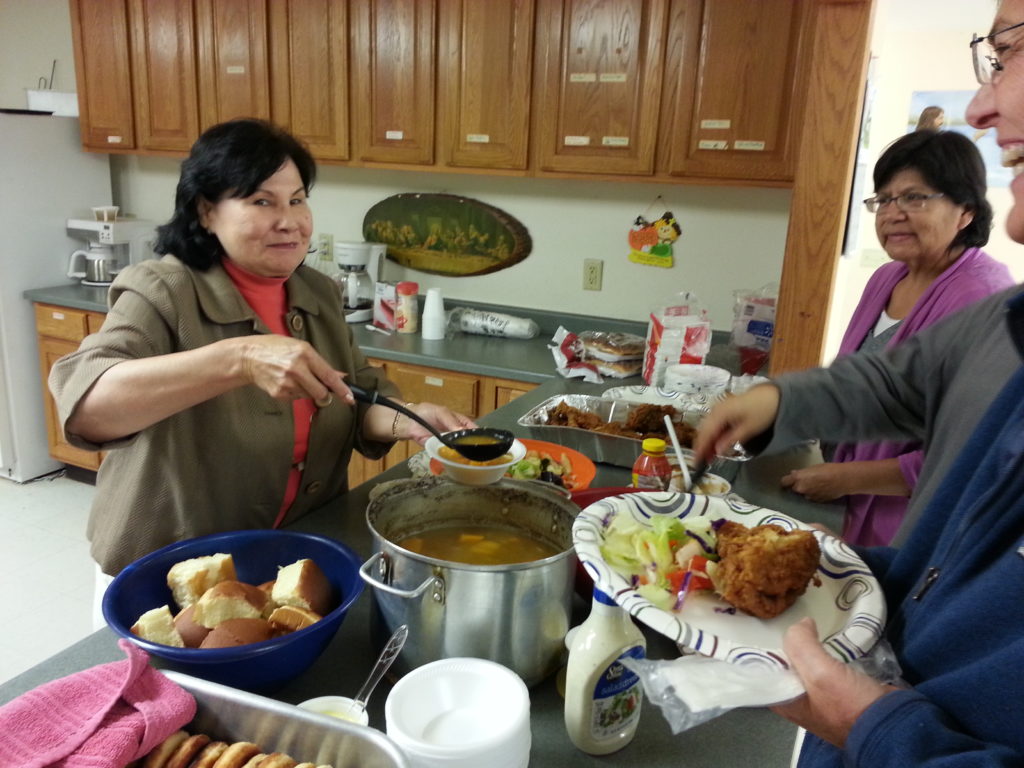
“We are sitting on a treasure here” were the departing words spoken to me by the Rev’d Joel Watson as I prepared to depart the Cheyenne River Reservation in South Dakota a little over a week ago. (Joel, a retired priest, is the husband of the Rev’d Margaret Watson; Margaret is the priest in charge of the ten Episcopal congregations on the Reservation and my guide and teacher for my three day visit to that truly awe-inspiring country.) Joel’s words might seem ironic, given the almost indescribable economic hardships experienced by the Lakota; hardships in large part imposed upon them by a conquering culture, decades of unfulfilled promises, and continued marginalization at the hands of government at many levels. There are very few employment opportunities, the best land has been taken away from them decade after decade, and a lack of hope is manifest in high rates of illness and suicide and in shortened life spans. But I believe that his words are true nonetheless, for my brief time among the people of Cheyenne River opened my eyes, heart and mind to a presence of God unlike I had ever experienced before.
First, let me say a bit more about Margaret Watson. I have known many priests over the years, but none who work harder or who are more in love with the people in their care. She visits and celebrates with two and sometimes three congregations each Sunday– with hours upon hours spent in the car between them. She has officiated over forty funerals so far this year, but has also baptized over forty new Christians. She knows who is in trouble when propane prices rise and outside air temperatures fall, she stops and talks without urgency or anxiety to children in the hospital waiting room and to teens at work in a local sandwich shop, and she preaches the good news of Christ without compromise and with a pastoral awareness that clearly speaks volumes to her listeners. (I heard her preach in a community experiencing a recent increase in gang violence – when she likened the Pharisees and Sadducees to rival street gangs competing with each other and with Jesus, I could see the bible coming alive in the face of the congregation). Margaret is showing the face of Jesus to those who need so desperately to see it, and she is in turn experiencing Jesus in them.
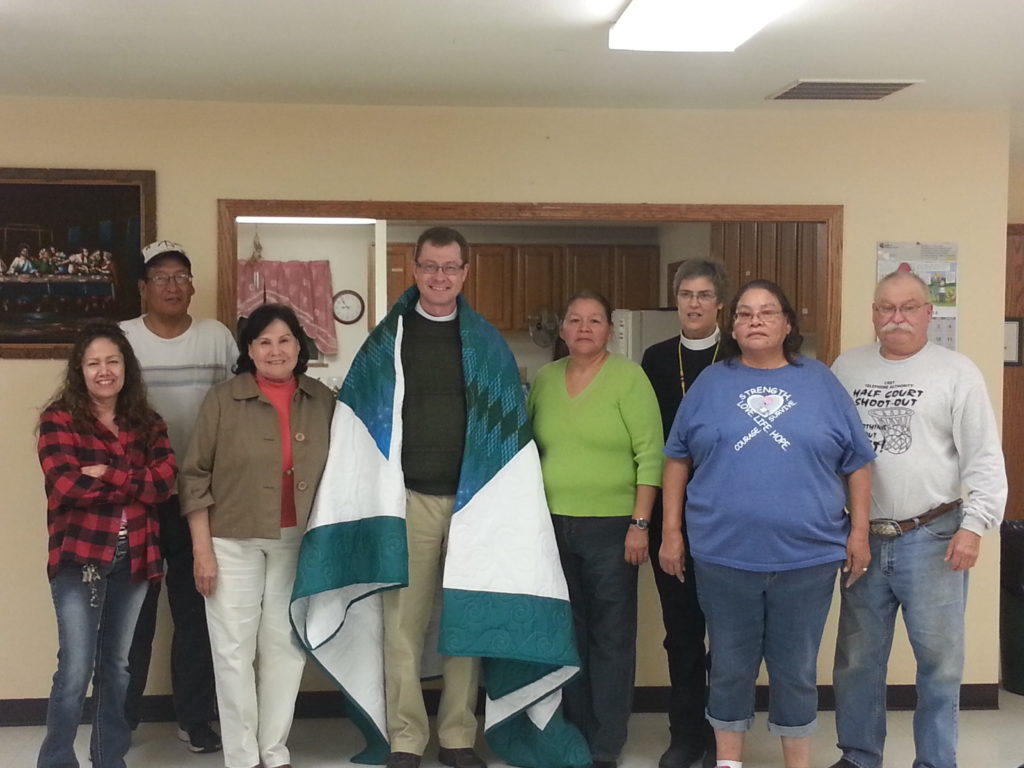
The Rev’d Portia Corbin, Youth and Young Adult Missioner for the Diocese of South Dakota, accompanied us on our journey. Portia rightfully pointed out that the stories shared with me by the various Lakota we encountered were their stories and not mine, and that I ought to be mindful of that when talking about my time on the Reservation.The gift of those stories and experiences has become a part of me, however – they have become a part of my story. My hope is that perhaps these three short tales that follow might inspire others to make a pilgrimage to Cheyenne River and experience the treasure for themselves.
One evening was spent at St. Andrew’s, Cherry Creek, where we baptized two young children. After the liturgy concluded, a group of teen-aged boys gathered around a traditional drum and sang songs while other children danced throughout the room with great joy. Not long after the drumming and singing began, a boy of about ten years of age pulled up a chair next to the drum, drumstick in hand, and joined in on the drumming. He would stay in time
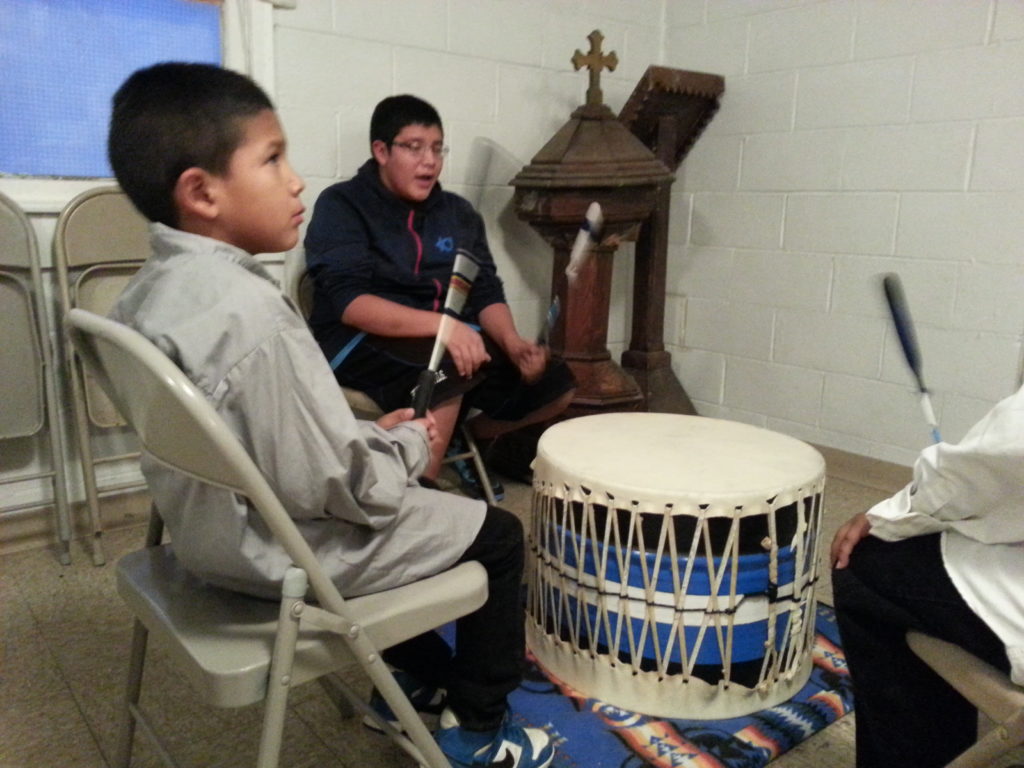
with the group for several beats but would then drop out of rhythm. The older boy next to him would gently reach over and place his hand on the errant drumstick, hold it down for several beats as he himself continued with the drum, and then allow the young boy to resume until he fell out of time again. This pattern repeated itself throughout the evening.
I was fascinated by the care that the group of boys showed for their young colleague. They could easily have taken offense at the interruption and distraction, they could have called for a parent or other adult to get him out of the way, or they could have made disparaging comments under their breath or shot him angry looks until he moved on. But instead, they let him learn by being in community with them – participating in and learning from their joy. When I later learned that the young boy had been born with a severe inner ear condition that had rendered him deaf for the first eight years of his life, and that it was only because of a recent operation that he could hear, I was even more moved by the act of patience and kindness that I witnessed.
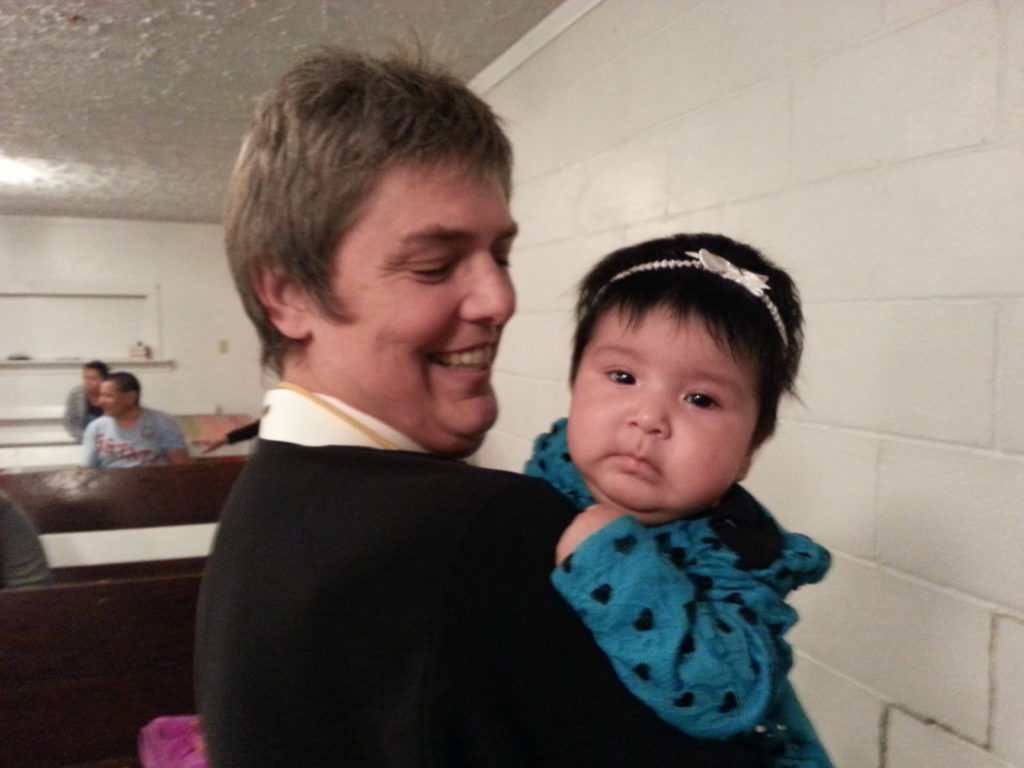
I shared a meal with a woman named Pauline, who told me that she was 81 years old. We got to talking about our families and she told me that she has seven great-great grandchildren, and that one of her great-great granddaughters just gave birth to a child – making Pauline a great-great-great grandmother! I told her how amazing that was, and asked her how many children she has, to which she answered “five.” And then when I asked how many grandchildren she had, she smiled a huge smile and laughed, telling me that she couldn’t remember them all. But, they all remember her, she said, and her family is what makes life so much fun.
Margaret took me to see most of the church buildings on the Reservation. Several do not have power, or heat, or running water. One congregation that does not have access to public utilities ran a line to the nearby Missouri River to capture water a few years ago, but the government made them disconnect it because the Lakota do not have water rights to river. A lack of funds and skilled labor has resulted in deferred maintenance in several cases, yet all of the churches are lovingly looked after. They each show their own unique signs of life and worship. Quilts, banners and paintings made by local artisans line the walls, and the church is clearly a gathering place for a people that values community.
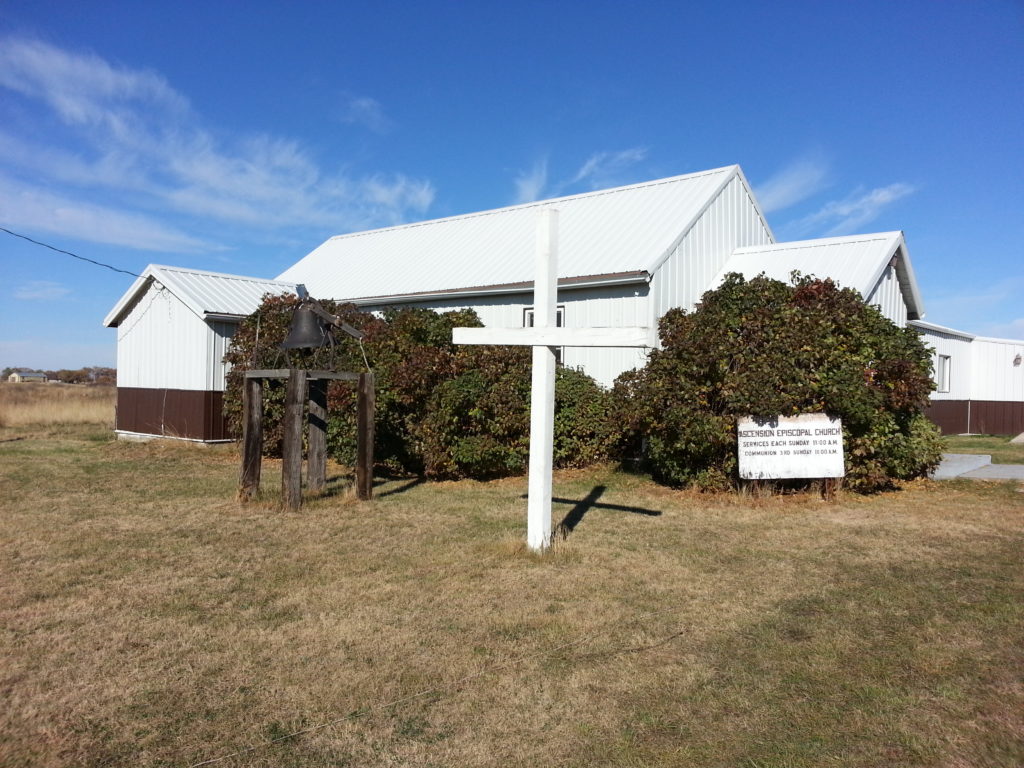
In what was probably the fourth or fifth church we visited – Emmanuel Episcopal Church in White Horse – I was struck by a carving on the back of a pew. Now while I am not typically in favor of using a pocket knife on church furnishings, the words that someone had carved there
struck me as particularly appropriate – “I was here… Always”. Given the difficulties of life that confront the Lakota it would be easy to dismiss the promises made by Jesus to those who follow him that he will never leave them, that whenever and wherever they gather in his name he will be there, and that he calls those who struggle to come to him for relief. These words carved deep into the wood stand in testament to the fact that the Lakota are a rich people indeed, because they are children of the God who is “here.”
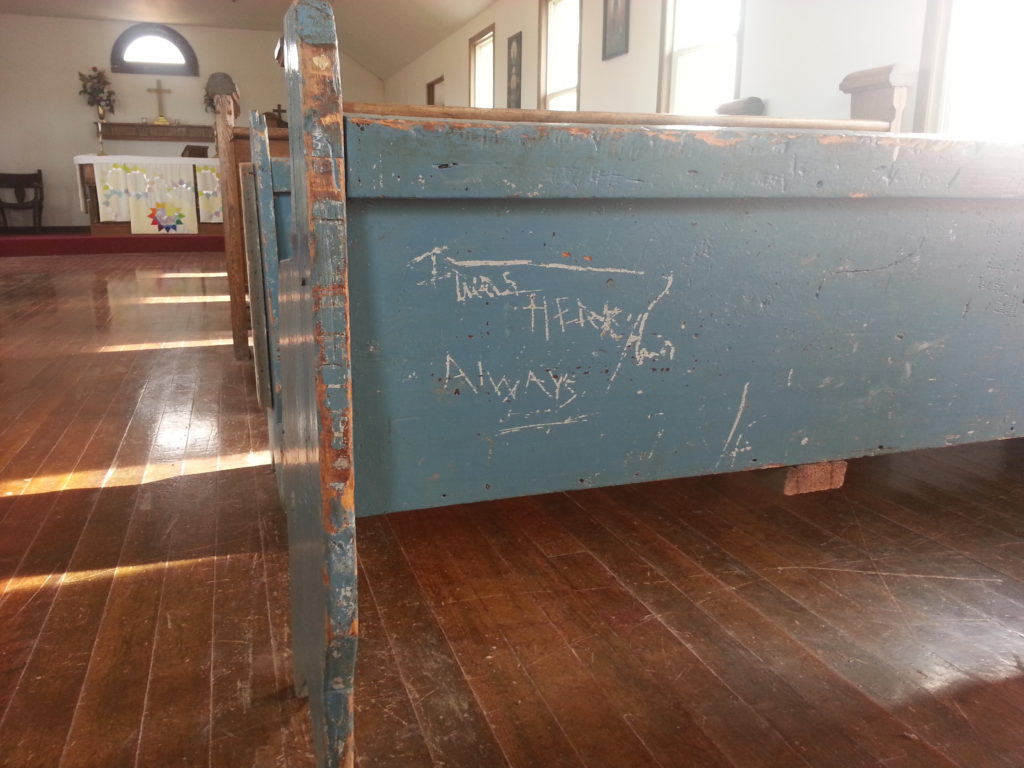
Contact:
The Office of Government Relations
eppn@episcopalchurch.org

